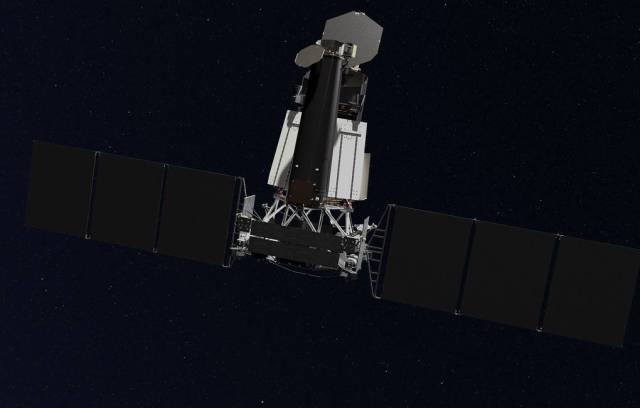The M. N. Pavlinsky ART-XC telescope installed there has sensitive detectors for recording X-rays
MOSCOW, October 30. /tass/. The developers of the Spektr-RG space observatory were able to register a stream of charged particles caused by solar flares in order to "reject" them in the future due to the negative impact on the detectors. This is stated in the message of the Space Research Institute (IKI) of the Russian Academy of Sciences, distributed on Saturday.
According to the institute, the Russian Pavlinsky ART-XC telescope installed at the observatory has sensitive detectors designed to register X-rays, and charged particles are a harmful background for it. "Therefore, the developers of the telescope have made a lot of efforts to register and then "cull" such events associated with the entry of charged particles into the detectors," the report says.
As a result, the telescope was prepared to work in adverse conditions. "The possibility of registering powerful solar flares and promptly notifying about them in the future can play a key role in preventing emergencies in near-Earth space and on Earth, primarily in the Arctic region," the ICI stressed.
On October 28, after 19:00 Moscow time, the telescope detectors recorded a fourfold increase in the background level, which was caused by the flow of solar cosmic rays. In total, over the past day, more than ten flares have been recorded on the Sun, including the first X-class flare in this solar cycle.
The Spektr-RG spacecraft was developed at the S. A. Lavochkin NPO (part of Roscosmos). It was created with the participation of Germany within the framework of the Federal Space Program of Russia by order of the Russian Academy of Sciences. The observatory scans the sky in a wide energy range with high sensitivity and angular resolution. At the end of October 2019, it successfully reached the working orbit located at the L2 point.
The work of the observatory is managed by the NGO im. Lavochkina. The data from the telescopes are received at the deep space communication centers in Medvezhye Lakes, Ussuriysk, and Baikonur. Their processing is also carried out by graduate students and young scientists.

